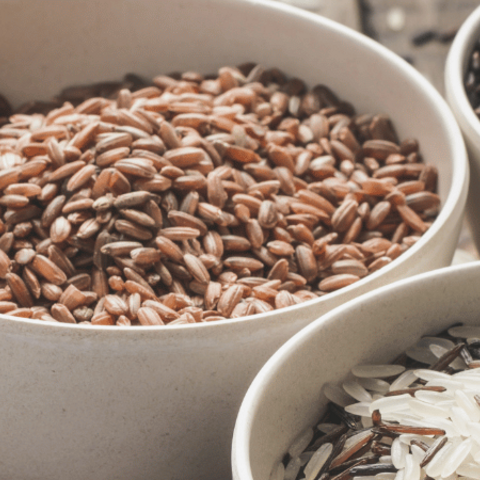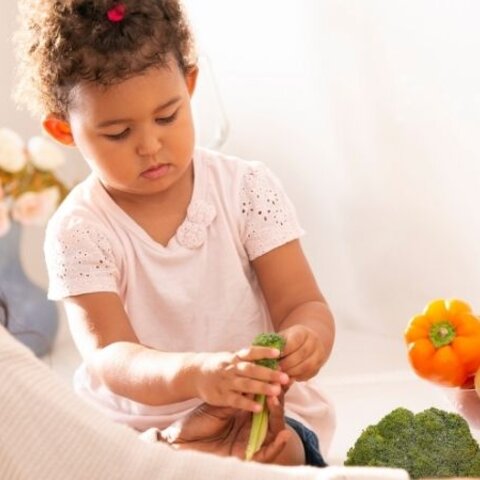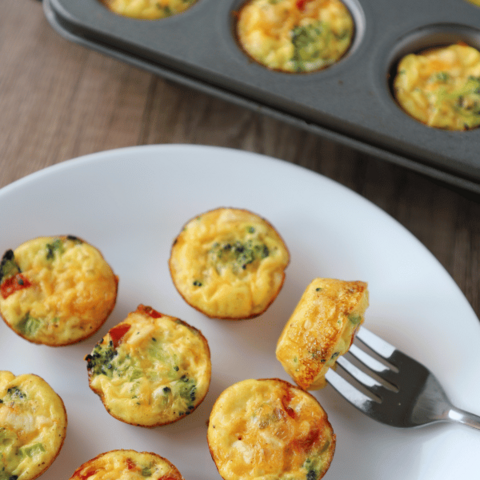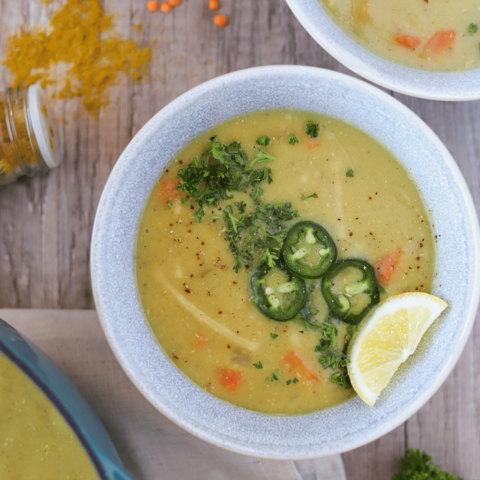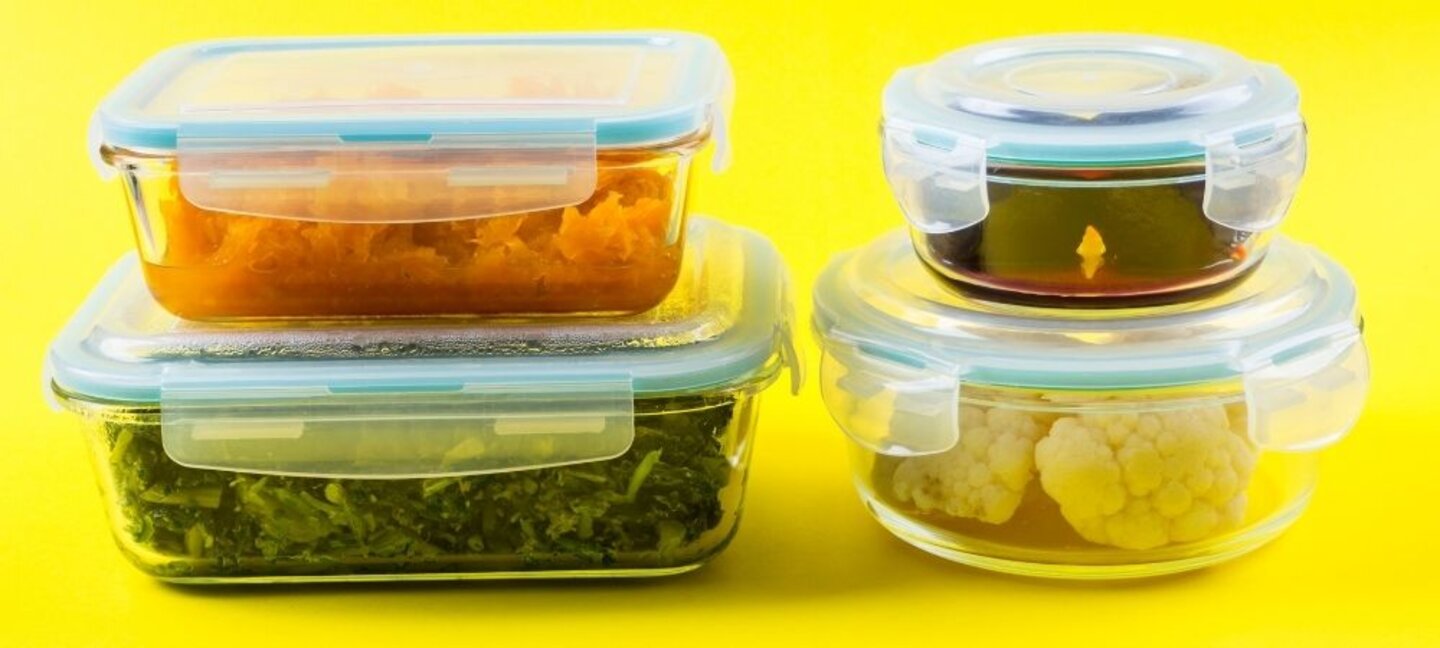
Using leftovers is a great way to minimize food waste and save time. They can be a great snack, next day lunch, or even be used to make a quick meal. Larger meals can be prepared earlier in the week and leftovers can also be used later in the week or put in the freezer. Take precautions with leftovers to make sure the food being eaten is safe. Check out the following food handling tips and ideas for making over leftovers so you can enjoy delicious and safe “Planned-Overs.”
Food Safety tips for Leftovers: Cooked foods should not remain at room temperature for more than two hours. Refrigerate or freeze food within 2 hours of cooking or being served at a restaurant. Discard any food left out longer than 2 hours. Label and date leftover containers to keep track of how long it has been in the refrigerator or freezer. Reheat leftovers thoroughly on a stove or in the microwave to a temperature of 165 degrees Fahrenheit (⁰F) or until hot and steamy. Bring soups, sauces, and gravies to a rolling boil. Wash hands before and after handling leftovers, use clean utensils and surfaces, and never taste a food to determine if it is safe. There is a limit to how long food can be kept safely, so when in doubt, throw it out! Check out general tips for refrigerator and freezer storage below and this food storage resource for more detailed information.
- Refrigerator storage. Your refrigerator should be kept at or below 40 ⁰F. This can be measured by keeping a thermometer in your refrigerator. For quicker cooling, separate big amounts of leftovers into shallow 2-inch containers and cut large pieces of food into smaller pieces. Food should always be covered or in a storage container with a lid sealed to slow the growth of bacteria.
- Freezer storage. If you are not planning to eat your leftovers within a few days, store leftovers in the freezer. Your freezer should be kept at or below 0 ⁰F. This can be checked by keeping a thermometer in your freezer. It is important to store food in good quality, air-tight containers. Frozen foods should be used as quickly as possible after freezing.
Planned-Overs by Food Group: Below are some ideas for making over leftovers by different food groups. There are also some great ideas for making a casserole or meal from what’s on hand.
Grains:
- Rice - Can be used to make rice pudding and fried rice, or added to meatballs, soups, and casseroles. It can also be frozen. You may need to add a small amount of liquid when reheating leftover rice. There is also a great resource for more information on all about cooking rice.
- Bread - If your bread, leftover rolls, hamburger or hot dog buns are getting a little dry, consider making bread pudding or letting them dry out so you can make your own breadcrumbs. Use day-old bread to make French toast. If you have one or two hamburger or hotdog buns left in the package, use them to make cheesy toast by spreading with soft margarine, topping with any kind of cheese, and broiling in the oven until cheese is melted and lightly browned.
- Pasta - Use in a pasta salad or casserole. Freeze for later use in casseroles, soups, vegetable dishes, or as a side dish with a sauce.
Fruit:
- Leftover fruit can be added to salads or pureed and used as pancake or ice cream topping. It can be mixed with yogurt, cottage cheese, or pudding. Leftover fruit can also be used in baked goods such as muffins or quick breads. Overripe bananas can be used to make banana bread or muffins, or frozen and used in fruit smoothies. Fruit juice can be frozen in ice cube trays and used for flavoring and chilling fruit drinks.
Vegetables:
- Use vegetables in soups, salads, omelets, pasta dishes and casseroles. Leftover baked potatoes can be cut up and fried in a pan, used to make a quick potato casserole or potato soup, or the potato pulp can be scooped out and used to make twice baked potatoes. Chopped raw onions, celery, or green peppers can be frozen in freezer bags or containers for use in soups, stews or casseroles.
Protein:
- Baked Beans - Used in casseroles or to make chili.
- Roasts - Can be sliced to make sandwiches or shredded for use in tacos, enchiladas or barbecued meat. It could also be cubed and used to make beef and noodles or frozen for use in casseroles.
- Steak/Chops- Could be thinly sliced and used to make fajitas (cook with onions, peppers, and fajita seasoning). Make a sandwich by topping meat with sautéed peppers, onions, and cheese. Top a tossed salad with sliced steak for a quick meal.
- Turkey or Chicken: Can be used in casseroles, soups, tacos, or enchiladas. The meat can also be thinly sliced to make sandwiches or it can be shredded to make chicken/turkey salad sandwiches. It can also be cubed to make chicken/turkey and noodles or frozen for later use in casseroles or soups.
- Ham: Can be used to make ham and cheese sandwiches (either hot or cold), or it can be sliced, frozen, and used later for sandwiches. It could also be cubed and used in casseroles or soups.
Sources:
Patton, P., Larvick, C., Albrecht, J. (2011). Food Safety for Families: Leftover Food Safety. Nebraska Extension.
Nutrition Education Program. (2010). A Guide to Safe Leftovers. Nebraska Extension.
Nutrition Education Program. (2005). Makeover Your Leftovers. Nebraska Extension.
This newsletter has been peer-reviewed.

